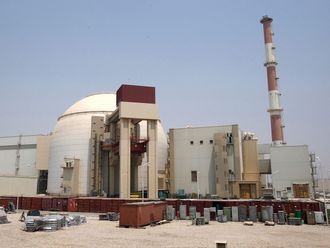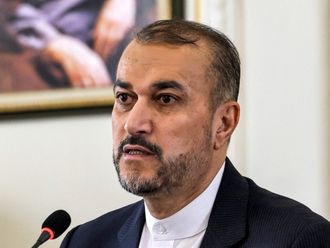Beirut: Once known as Emesa, a name that could refer to the sun god Aal Gabal, Homs may be a shortened version of Emesenoi, which identified an Arab tribe that ruled the area long before the Roman Empire occupied Syria.
Under the Crusaders, whose majestic Krak des Chevaliers (referred to as the Husn Al Akrad [Castle of the Kurds]) fortress lies a mere 65km west of the city in the direction of Tartus, Homs became "La Chamelle". Located on the Al Asi [Orontes] river, 166km north of the capital city, Homs is the central link between the Syrian interior and the Mediterranean coast.
A multi-cultural city that was conquered by Muslim warriors in the 7th century, various Muslim dynasties aiming to control Syria invariably focused on its strategic position, which literally ensured access to the geographic gap that reached the sea.
For roughly 2,000 years, Homs has served as a key agricultural market, production site and trade center for nearby villages, and while it began to decline under the Ottoman Empire, the city regained its economic importance after 1946 when Damascus financed the cotton industry that filled a significant portion of fertile lands throughout the province.
From 637 onwards, invading armies, many of which left their marks on the city, repeatedly conquered Homs. Khalid Bin Al Walid led the Rashidun Army into it, while the caliph Omar established Homs as the capital of his Jund Homs, a district within the Bilad Al Sham, which led historians to conclude that the city was probably the first in Syria to have a substantial Muslim population.
Consequently, Homs became a centre of piety where several companions of the Prophet Muhammad (PBUH), settled there after its conquest. The tombs of Bin Al Walid, his son Abdul Rahman, and Obaid Allah, a son of the Caliph Omar, are located in the city.
With the arrival of the Abbasids in 750, Syria witnessed new clashes, as the Arab tribes revolted against the Caliphate. For roughly 30 years during the 10th century, Byzantine commanders raided Homs, and its inhabitants were subject to slaughter and plunder.
According to the historian Al Muqaddasi, Homs was then the largest city in all of Syria, but suffered "great misfortunes" and "threatened with ruin," which was it fate for centuries to come. When the Mirdasids (Banu Kalb tribe) were replaced by the Hamdanids as rulers in the 11th century, the new masters sought and received the alliance of the Fatimids of Egypt, which was the first Shiiite political thrust in Syria. Naturally, a Sunni reaction was nearly guaranteed by the rising Seljuk Turks, who occupied Homs starting in 1090.
For the next three centuries, Homs was besieged by a series of warriors, many of whom transformed the city into a major battleground. In turn, and because of its militarisation, the city's bare settlements were transformed into carefully designed dwellings, with paved roads, imposing mosques, and open markets where one could find a variety of products, both locally produced or imported. Residents were pleasant and several historians noted that "women were beautiful … celebrated for their fine skin."
Even Saladin, who ruled Homs between 1175 and 1179, was impressed, as he restored northern Syria to the Ayyubi dynasty. In 1355, Ibn Batuta referred to Homs' fine trees, good markets, and a "fine Friday Mosque," noting that all of its inhabitants were Arabs.
Regrettably, success and prosperity attracted predators, as Timur seized the city in 1400, and later in the 15th century, various Badu raids took their turns to spread havoc. Still, when the Ottomans finally imposed their imperial rule, Homs experienced a steady decline. The city became a sanjak (district) attached to the wilayah (province) of Tripoli, in current Lebanon, which explains the many family links between these two cities.
Neglected and unsure of prospects, many of Homs' inhabitants left for Tripoli, where they could earn a living. With the end of World War I and the collapse of the Ottoman Empire, Syria fell under French mandate, which motivated many to join in the 1925 revolts that saw Sunnis join Druze forces against the French rule. Foreign occupation did not end as the French moved their military academy from Damascus to Homs in 1932 that, amazingly, was the only such institution in Syria until 1967.
The Homs Military Academy played a major role in the years following Syria's independence in 1946 as several of its graduates went on to become high ranking officers in the Syrian Arab Army, and a few either organised or took part in the series of coup d'états that defined political life in the country during the second half of the 20th century. After 1963 and the ascension of the Baath Party, Homs was chosen to be the seat of the Baath University, which subjected hapless Syrians to alien ideological indoctrination. Despite such attention, kind and gentle Homsis never lost their political and religious penchants, remaining true to faith and identity.
Dr. Joseph A. Kechichian is an American scholar of Armenian descent. He is a commentator and author of several books on Gulf affairs












